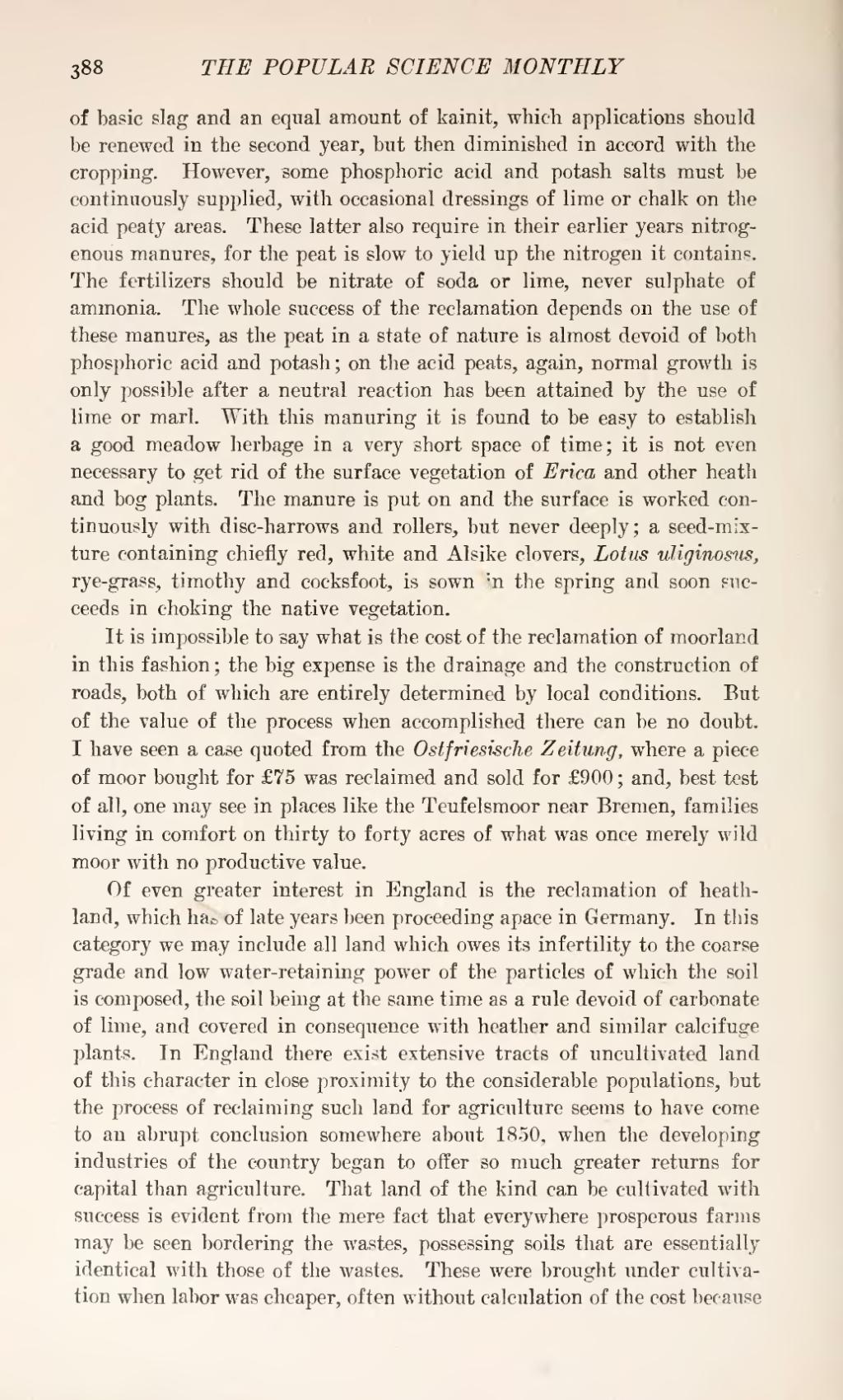of basic slag and an equal amount of kainit, which applications should be renewed in the second year, but then diminished in accord with the cropping. However, some phosphoric acid and potash salts must be continuously supplied, with occasional dressings of lime or chalk on the acid peaty areas. These latter also require in their earlier years nitrogenous manures, for the peat is slow to yield up the nitrogen it contains. The fertilizers should be nitrate of soda or lime, never sulphate of ammonia. The whole success of the reclamation depends on the use of these manures, as the peat in a state of nature is almost devoid of both phosphoric acid and potash; on the acid peats, again, normal growth is only possible after a neutral reaction has been attained by the use of lime or marl. With this manuring it is found to be easy to establish a good meadow herbage in a very short space of time; it is not even necessary to get rid of the surface vegetation of Erica and other heath and bog plants. The manure is put on and the surface is worked continuously with disc-harrows and rollers, but never deeply; a seed-mixture containing chiefly red, white and Alsike clovers, Lotus uliginosus, rye-grass, timothy and cocksfoot, is sown in the spring and soon succeeds in choking the native vegetation.
It is impossible to say what is the cost of the reclamation of moorland in this fashion; the big expense is the drainage and the construction of roads, both of which are entirely determined by local conditions. But of the value of the process when accomplished there can be no doubt. I have seen a case quoted from the Ostfriesische Zeitung, where a piece of moor bought for £75 was reclaimed and sold for £900; and, best test of all, one may see in places like the Teufelsmoor near Bremen, families living in comfort on thirty to forty acres of what was once merely wild moor with no productive value.
Of even greater interest in England is the reclamation of heathland, which has of late years been proceeding apace in Germany. In this category we may include all land which owes its infertility to the coarse grade and low water-retaining power of the particles of which the soil is composed, the soil being at the same time as a rule devoid of carbonate of lime, and covered in consequence with heather and similar calcifuge plants. In England there exist extensive tracts of uncultivated land of this character in close proximity to the considerable populations, but the process of reclaiming such land for agriculture seems to have come to an abrupt conclusion somewhere about 1850, when the developing industries of the country began to offer so much greater returns for capital than agriculture. That land of the kind can be cultivated with success is evident from the mere fact that everywhere prosperous farms may be seen bordering the wastes, possessing soils that are essentially identical with those of the wastes. These were brought under cultivation when labor was cheaper, often without calculation of the cost because
